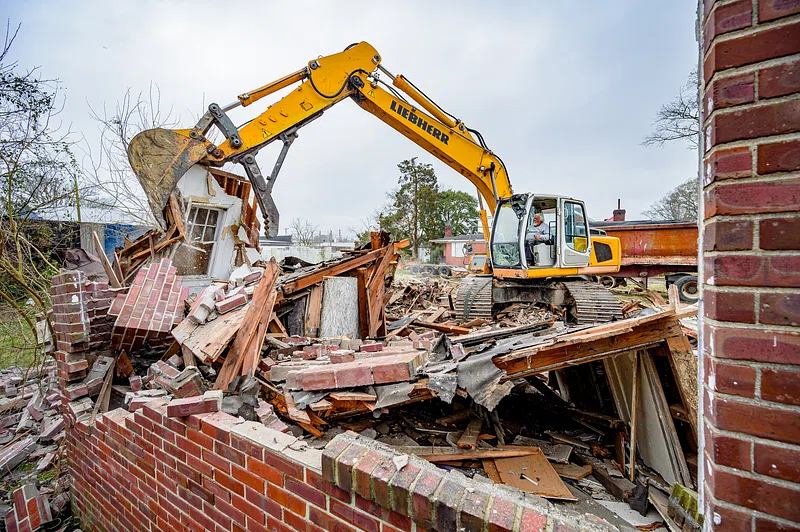Demolition is a key step of redevelopment, as it removes an existing building to prepare for new construction. This process produces dust and noise pollution, which could temporarily disrupt surrounding businesses. When the process is complete, neighborhood appearance often improves, and local property values may increase. Here are some ways demolition impacts surrounding properties:
Building Safety
Building removal impacts the safety of nearby buildings and people. When building sections collapse during demolition, vibrations spread through the ground. This shakes the foundation of neighboring structures, potentially causing shifts or cracks that impact structural integrity. Falling debris may also land beyond property boundaries and create a safety issue for pedestrians.
Professional demolition services help mitigate adverse effects on surrounding properties by conducting thorough site assessments before the project begins. They review distances to nearby buildings, sidewalks, and roadways to verify that their demolition method minimally impacts nearby structures. Temporary fencing can be installed in high-traffic locations to direct people a safe distance from the worksite. In commercial areas, signage may be posted at the site, or property owners notified in advance about the upcoming project. This helps them prepare for potential disruptions.
Site Cleanliness
Demolition projects naturally produce dust, debris, and noise as structures are removed with heavy machinery. This often impacts nearby properties, as dust can enter buildings through customers’ shoes or during deliveries, and excess noise may affect service quality. Dust mitigation techniques, like hanging dust barriers or wetting down sites, help prevent dust from spreading beyond the worksite.
When projects are large, various materials, such as cement, steel, and wood, usually accumulate on-site. For some, this is an eyesore that influences how the public views surrounding properties. Professionals maintain clean work sites with efficient waste removal methods. Reusable construction materials like metal or wood are often recycled, and in surgical demolition projects, some building assets are preserved for the new construction.
When demolishing older buildings, professionals are prepared to address health hazards, such as asbestos. They remove asbestos according to guidelines set by the EPA and OSHA. This helps maintain the safety of individuals on or near the worksite.
Demolition Benefits
Completed demolition projects typically have several positive impacts on local communities. Some of these include:
- Increased property values: Cleanliness and curb appeal influence a neighborhood’s desirability for potential buyers. Demolishing vacant, run-down, or condemned buildings helps increase the value of surrounding homes and commercial properties.
- Improved safety: Dilapidated buildings pose safety issues for residents and may attract criminal activity. Removing these structures helps reduce hiding places and increase natural surveillance.
- Opportunity for development: Unused land is freed for new construction, creating space for housing or commercial infrastructure that meets community needs.
- Community revitalization: Demolishing buildings that have become an eyesore helps enhance a neighborhood’s appearance. Cleared sites may also be repurposed for public amenities, such as parks or community gardens.
Schedule Demolition Today
Demolition projects require temporary adjustments for nearby business operations, traffic flow, or property managers. Upon completion, they often help revitalize the community and improve its appearance. Professional teams complete total or surgical demolition projects, depending on your renovation or rebuild requirements. These projects may address interior or exterior structures. Contact a demolition company today to learn more.



